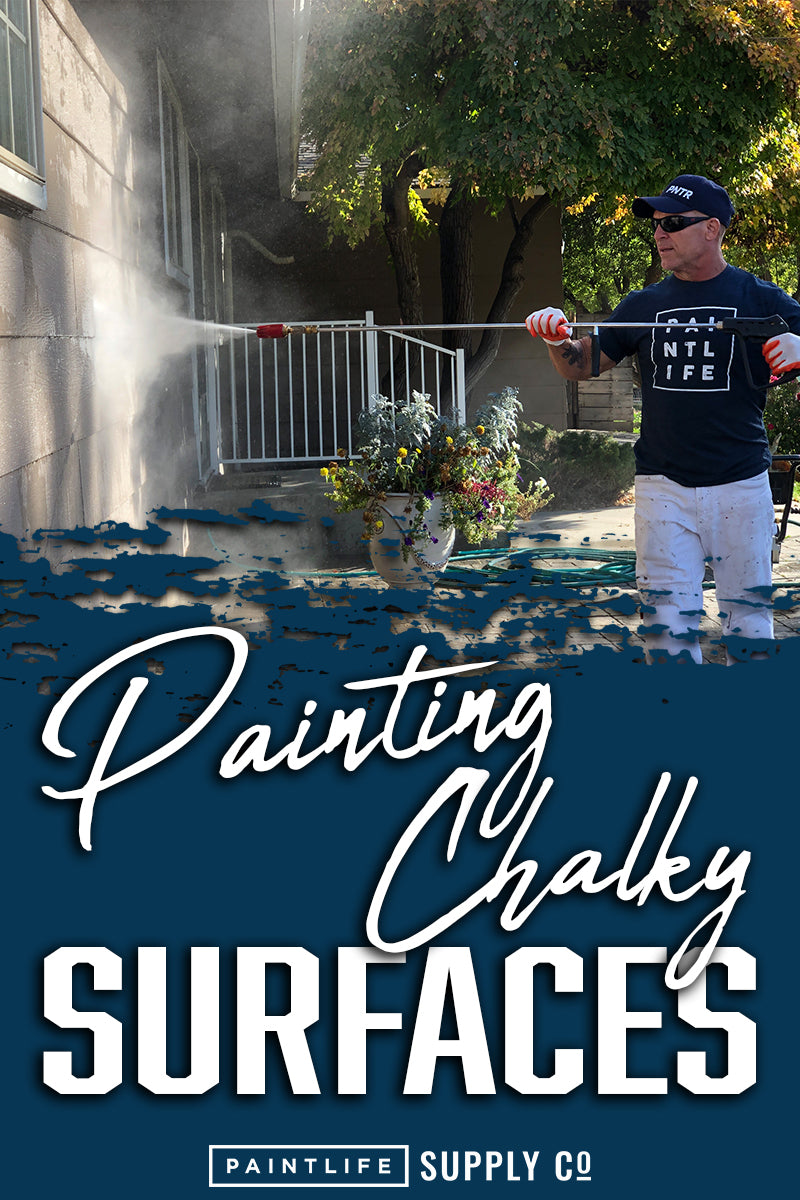
Painting Chalky Surfaces
Chalky surfaces can be a painters worst enemy, making paint adhere to it could become incredibly difficult without the proper preparation before paint even hits the surface. Today I am gonna talk about the couple of options you have to correctly painting a chalky surface and making your paint adhere to it for years to come. And how do you tell if you have a chalky surface? Simply rub your hand across the face of the surface and if you have a chalk like substance stuck to your hand you have a chalky surface you need to take care of.
The first step that I will take in any chalky situation, or really any paint job I do for that matter, is to pressure wash the surface a day or two before I paint. Paint will always adhere better to a clean surface than a dirty one. I will always pressure wash with a rotating nozzle which will agitate what’s on the surface of your project and clean it more effetely that a straight for flat shot nozzle alone. I personally don’t like using any chemicals when I pressure wash and I find water alone works well to get me the results I’m looking for 90% of the time.
However my past couple of jobs that I’ve had to do this summer have had some chalky surfaces that wouldn’t clean off with just pressure washing alone or I wasn’t able to get a pressure washer to the location. If this is the case with your project you have a couple different options. If the surface is rather small like a metal door or a set of metal doors I would suggest cleaning the surface with Krud Kutter and a wet rag, you’d be surprised with how much substance you will get off of the door with just that alone. Once you’ve gone over it with the Krud Kutter you want to make sure you rinse the surface off of containments just with water, then dry it off with a dry rag.
The final and most effective thing you can use is a product called Emulsa Bond. I’ve been using Emulsa Bond for 20 years now and it is a product specifically designed to help paint adhere to difficult surfaces. It works on metal, wood, aluminum, plywood, hardwood, and concrete so it can be used in nearly every painting situation where you’d run into chalky surfaces. It goes into the paint at a ratio of 1 quart per gallon of paint, just dump it in stir it and its good to go, it's an incredibly fast and easy process. It can be rolled, brushed, or sprayed without changing the final product of the paint. Of course the quality of paint you use is always going to be a factor and the better the paint the better it will penetrate and adhere to any surfaces its applied too.
In conclusion, painting chalky surfaces is a challenge, there’s no doubt about that, but it’s something that a well equip painter can handle, you just need to plan for the extra prep and product you’ll need to conquer it. Hopefully the tips and tricks I shared with you can help you next time you run into a difficult situation. Stay educated and stay equipped!
